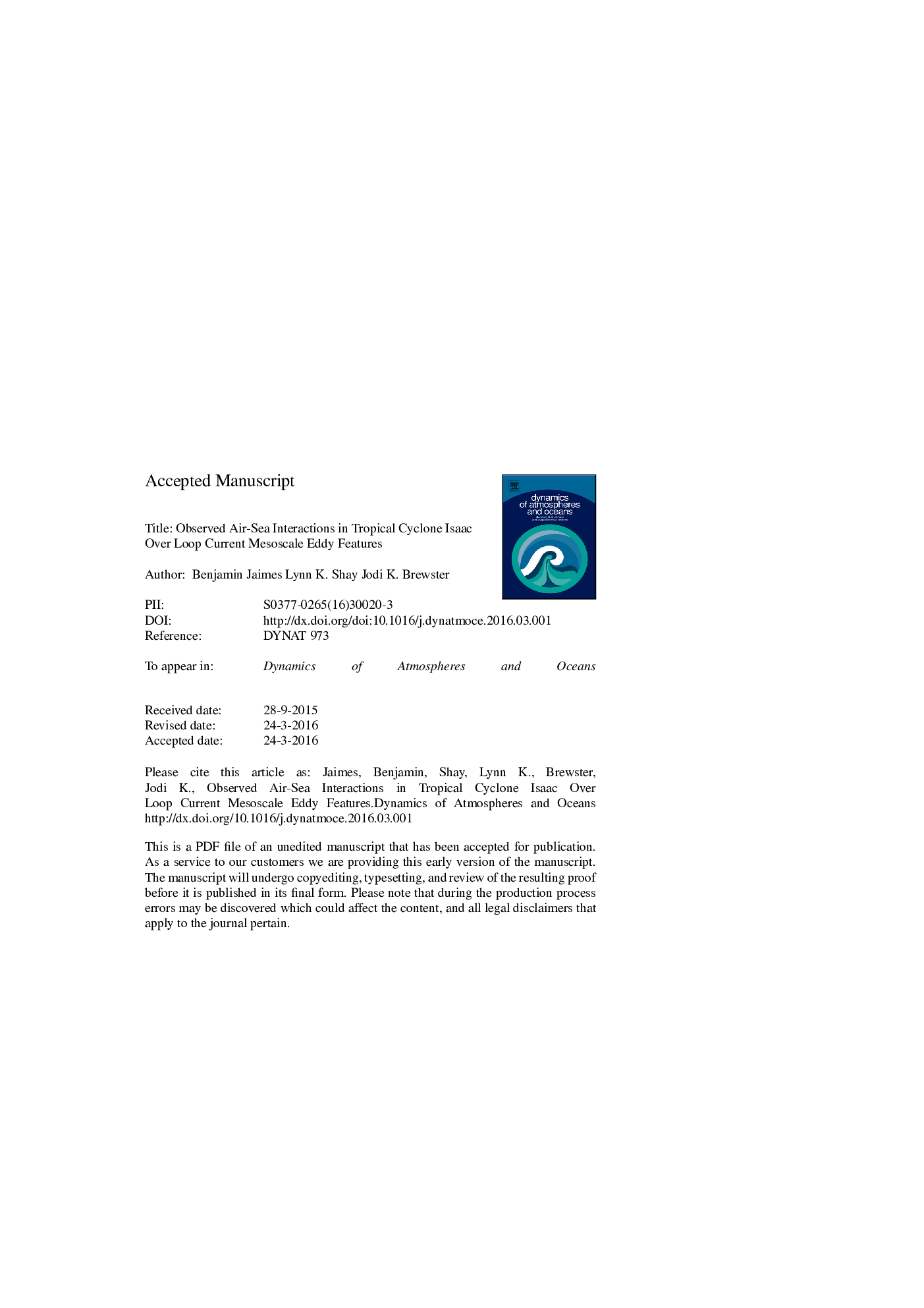| Article ID | Journal | Published Year | Pages | File Type |
|---|---|---|---|---|
| 5779183 | Dynamics of Atmospheres and Oceans | 2016 | 62 Pages |
Abstract
Air-sea interactions during the intensification of tropical storm Isaac (2012) into a hurricane, over warm oceanic mesoscale eddy features, are investigated using airborne oceanographic and atmospheric profilers. Understanding these complex interactions is critical to correctly evaluating and predicting storm effects on marine and coastal facilities in the Gulf of Mexico, wind-driven mixing and transport of suspended matter throughout the water column, and oceanic feedbacks on storm intensity. Isaac strengthened as it moved over a Loop Current warm-core eddy (WCE) where sea surface warming (positive feedback mechanism) of â¼0.5 °C was measured over a 12-h interval. Enhanced bulk enthalpy fluxes were estimated during this intensification stage due to an increase in moisture disequilibrium between the ocean and atmosphere. These results support the hypothesis that enhanced buoyant forcing from the ocean is an important intensification mechanism in tropical cyclones over warm oceanic mesoscale eddy features. Larger values in equivalent potential temperature (θE=365âK) were measured inside the hurricane boundary layer (HBL) over the WCE, where the vertical shear in horizontal currents (δV) remained stable and the ensuing cooling vertical mixing was negligible; smaller values in θE (355âK) were measured over an oceanic frontal cyclone, where vertical mixing and upper-ocean cooling were more intense due to instability development in δV. Thus, correctly representing oceanic mesoscale eddy features in coupled numerical models is important to accurately reproduce oceanic responses to tropical cyclone forcing, as well as the contrasting thermodynamic forcing of the HBL that often causes storm intensity fluctuations over these warm oceanic regimes.
Related Topics
Physical Sciences and Engineering
Earth and Planetary Sciences
Atmospheric Science
Authors
Benjamin Jaimes, Lynn K. Shay, Jodi K. Brewster,
